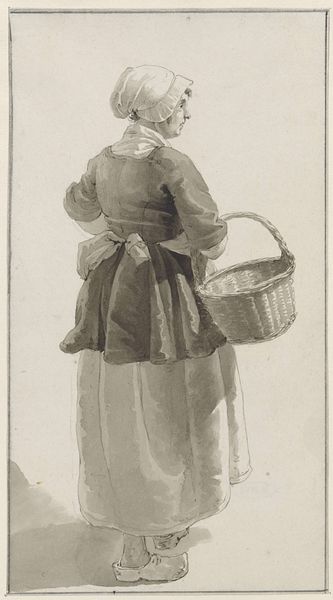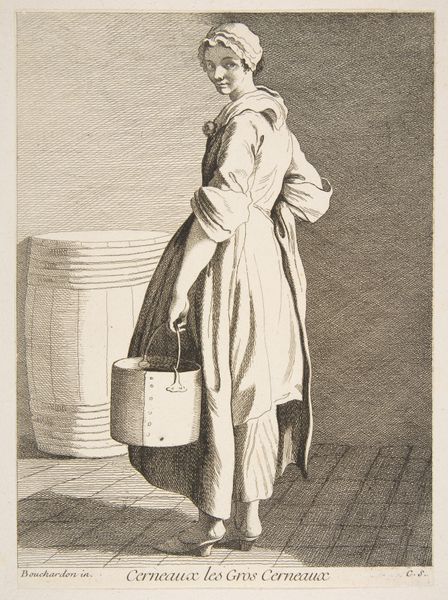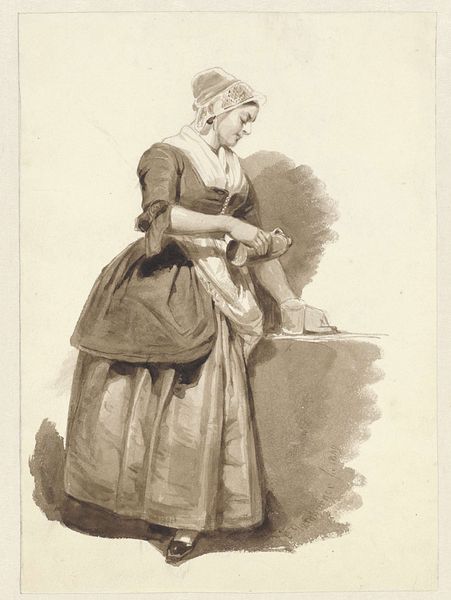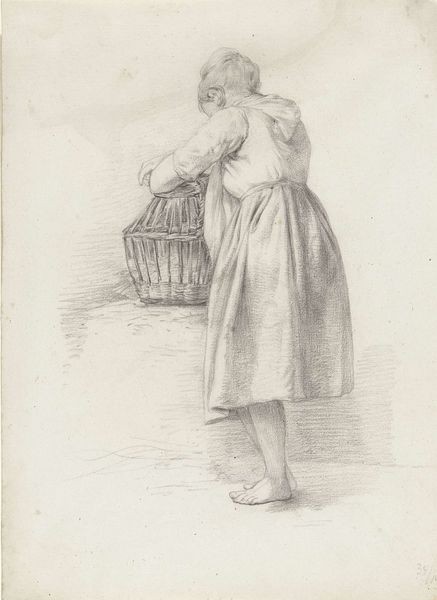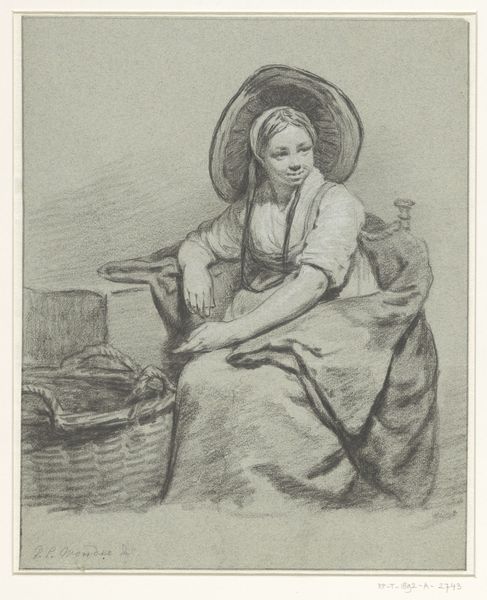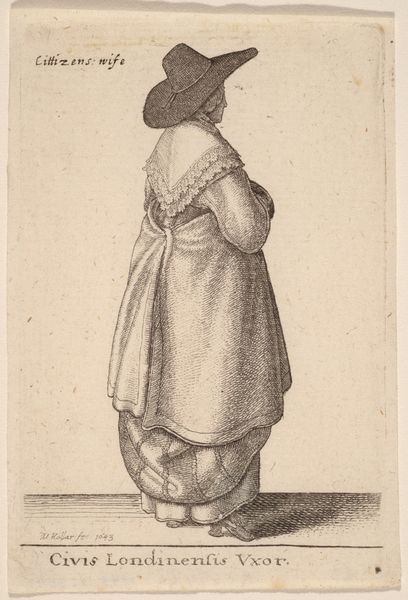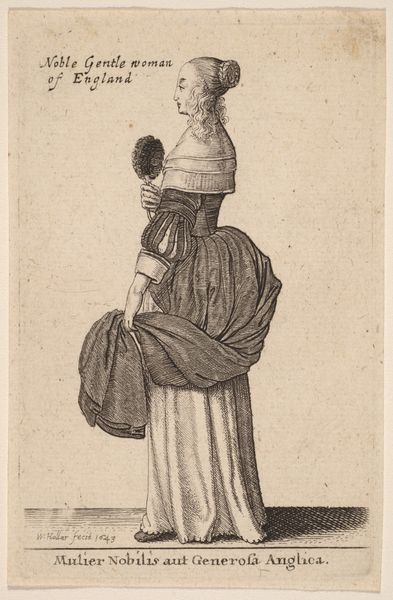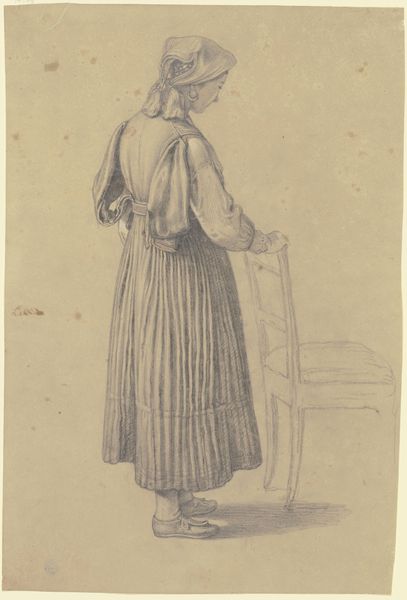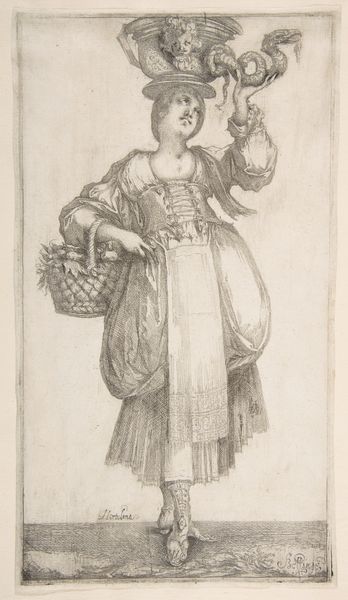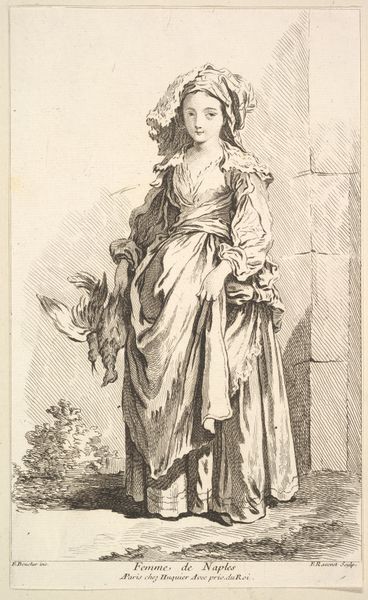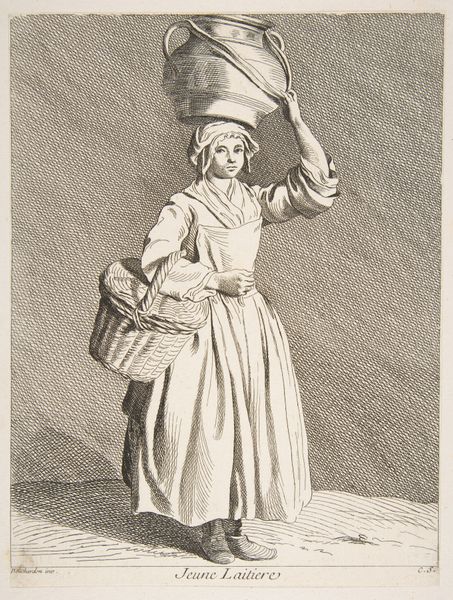
drawing, print, etching
#
drawing
#
baroque
# print
#
etching
#
figuration
#
line
#
genre-painting
Dimensions: Sheet: 9 5/16 x 6 13/16 in. (23.6 x 17.3 cm) Image: 8 7/8 × 6 3/4 in. (22.5 × 17.2 cm)
Copyright: Public Domain
Curator: Welcome. Here we have Anne Claude Philippe Caylus’s etching, “Oyster Seller,” created in 1738. It is currently held here at the Metropolitan Museum of Art. Editor: The first thing that strikes me is the stark simplicity. The crosshatching that forms the background makes the woman appear as though she's pushing forward. There's an impressive manipulation of line here. Curator: Indeed. Caylus, as an engraver and antiquarian, was deeply immersed in the social fabric of his time. This print provides an intimate glimpse into the lives of working-class women in 18th-century France. This image really offers insights into gender and labor during that era, particularly considering the limited opportunities available to women. Editor: Focusing on Caylus's masterful use of line, it guides the viewer’s eye effortlessly across the subject. The precise rendering of the oyster seller’s form, along with the deep shadow behind, suggests an acute awareness of tonal contrast. Notice how the delicate etching defines the coarse texture of her clothes versus the relative smoothness of her skin. Curator: Precisely! We can read this contrast not merely as aesthetic refinement but also as social commentary. Caylus is inviting his bourgeois audience to contemplate the lived reality of this woman—her weariness, her labor. She almost has the look of classical statue that has to deal with the realities of making a living in a pre-revolution culture. Editor: Yes, but to consider it only as a work of social commentary risks undermining Caylus’s virtuosity. What do you make of the scattered shells? Those shapes contribute to the picture as much as they reflect the daily grind. They anchor the woman to the site she has been in or is on her way to. They create balance with the larger basket she is carrying. Curator: Perhaps! I also find it interesting that Caylus presents the Oyster Seller, burdened by her trade. How does this work subvert or perpetuate stereotypes of working-class women during this historical moment? The work, I feel, really compels a response. Editor: Ultimately, the enduring power of this etching resides not merely in its historical context, but in its capacity to demonstrate the complex relationship between the technique and the artist. Curator: A wonderful demonstration of how art can operate on multiple levels, speaking both to the formal and sociopolitical dimensions of its creation.
Comments
No comments
Be the first to comment and join the conversation on the ultimate creative platform.
